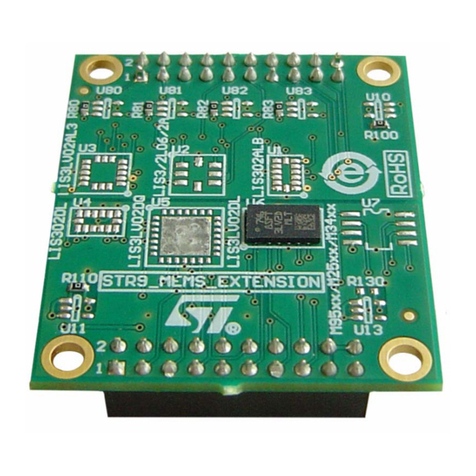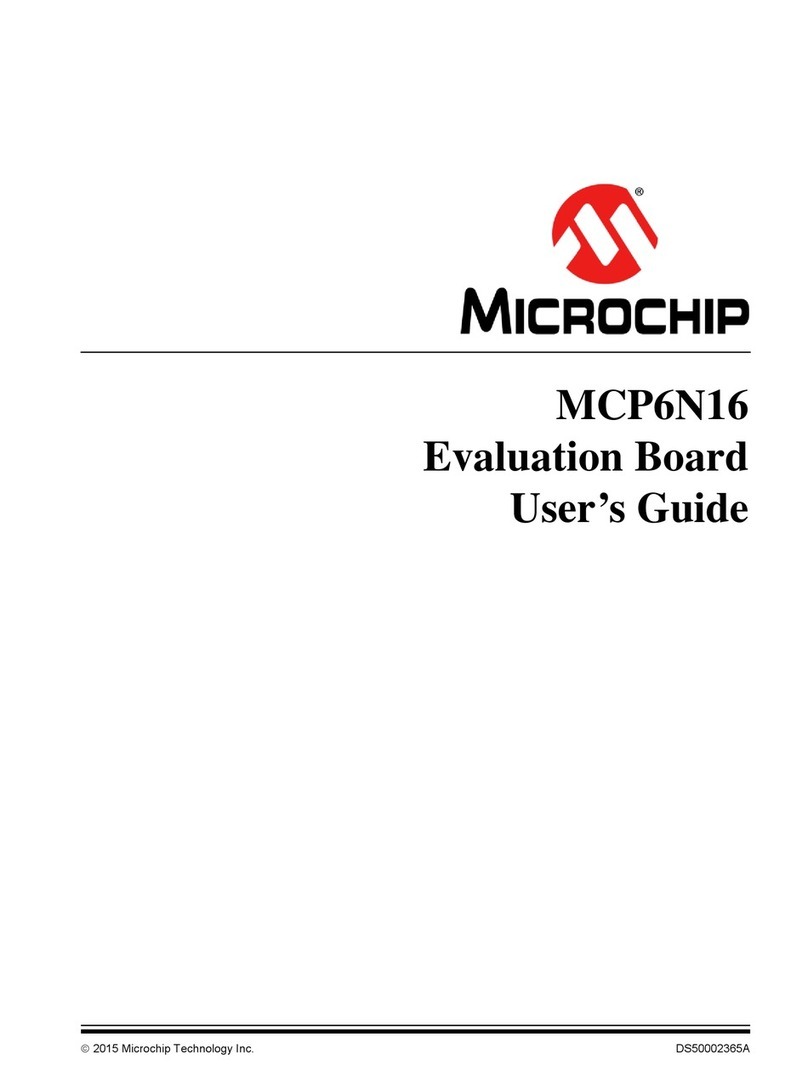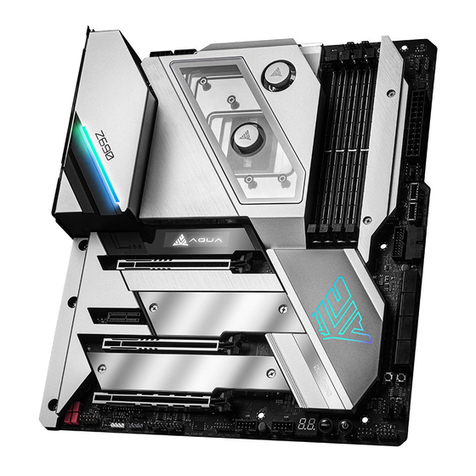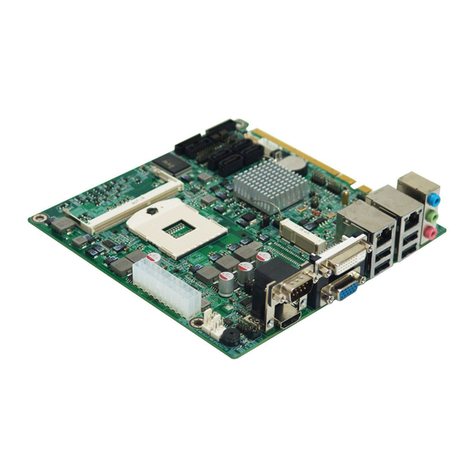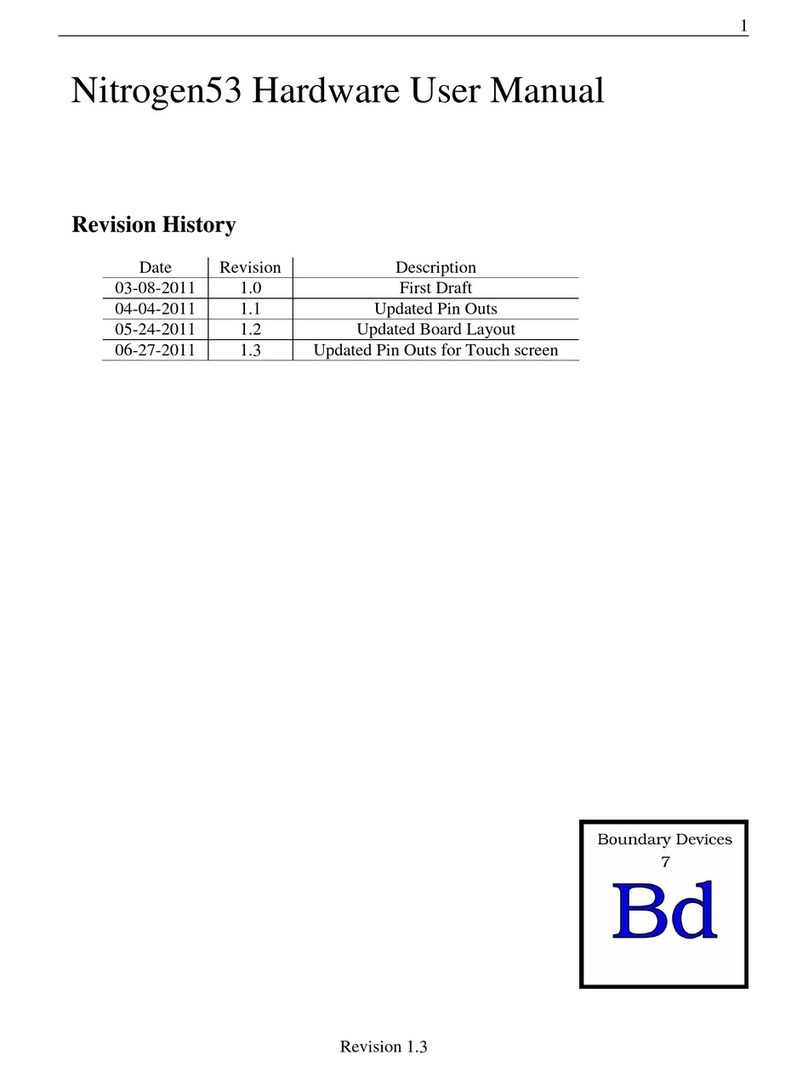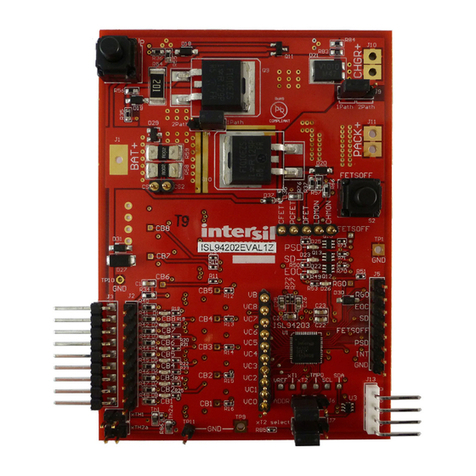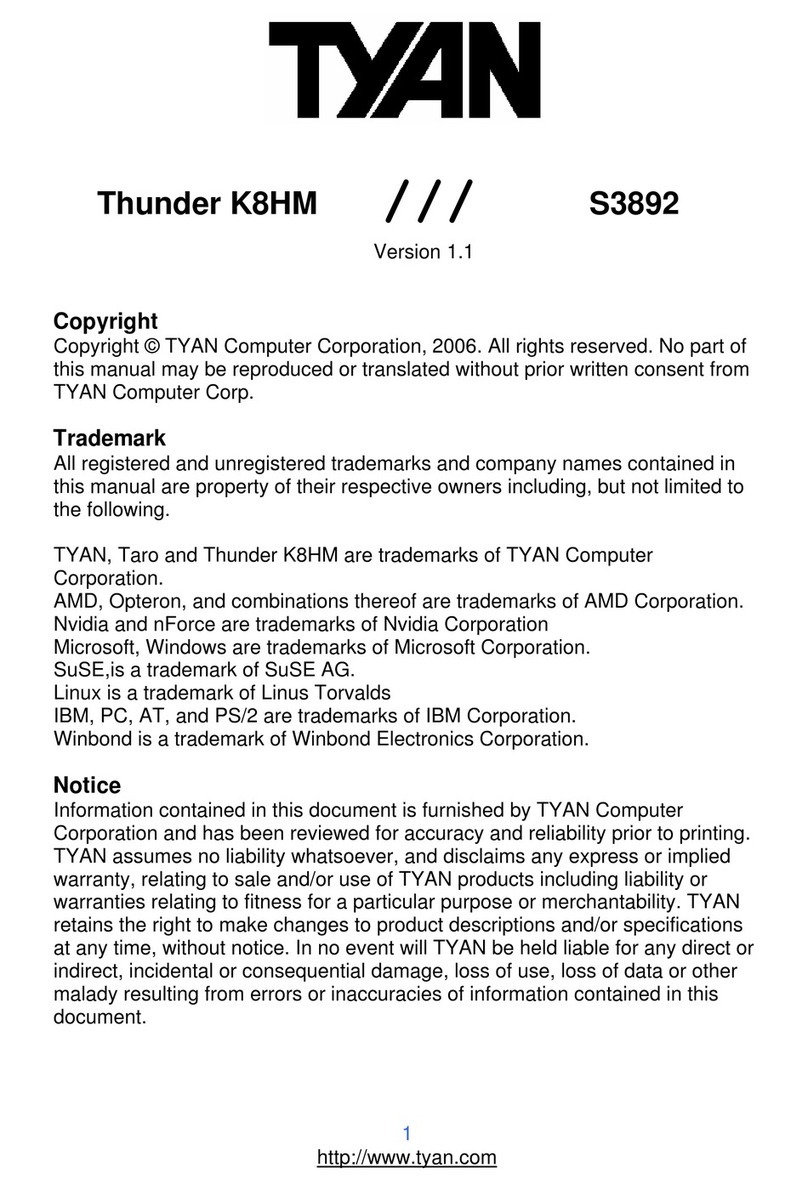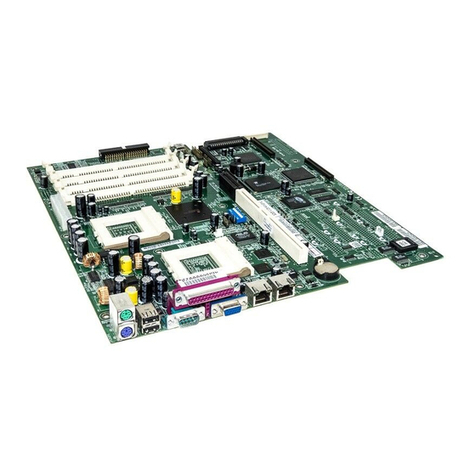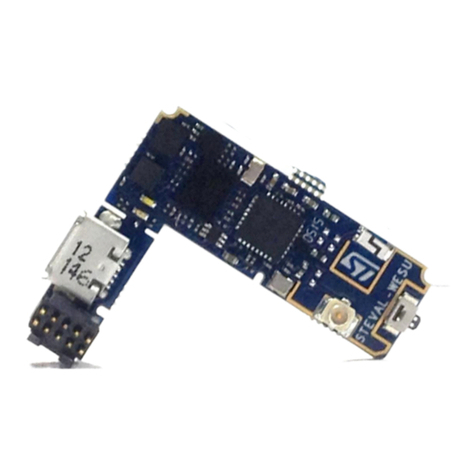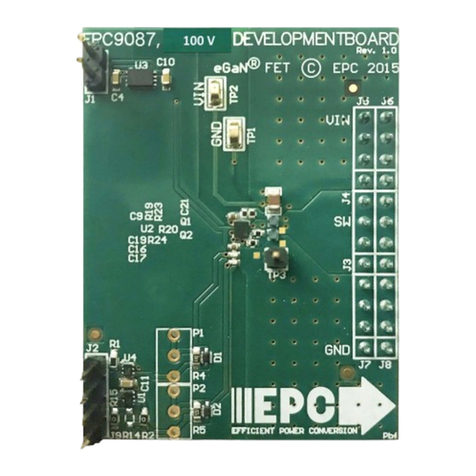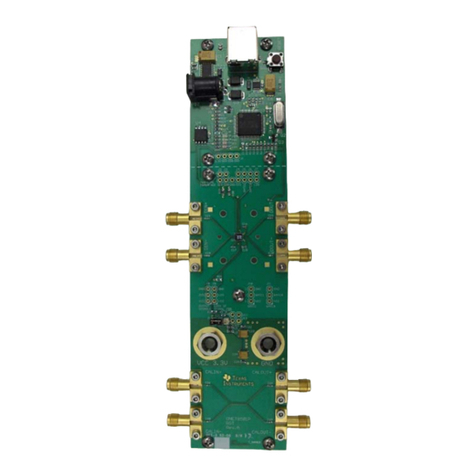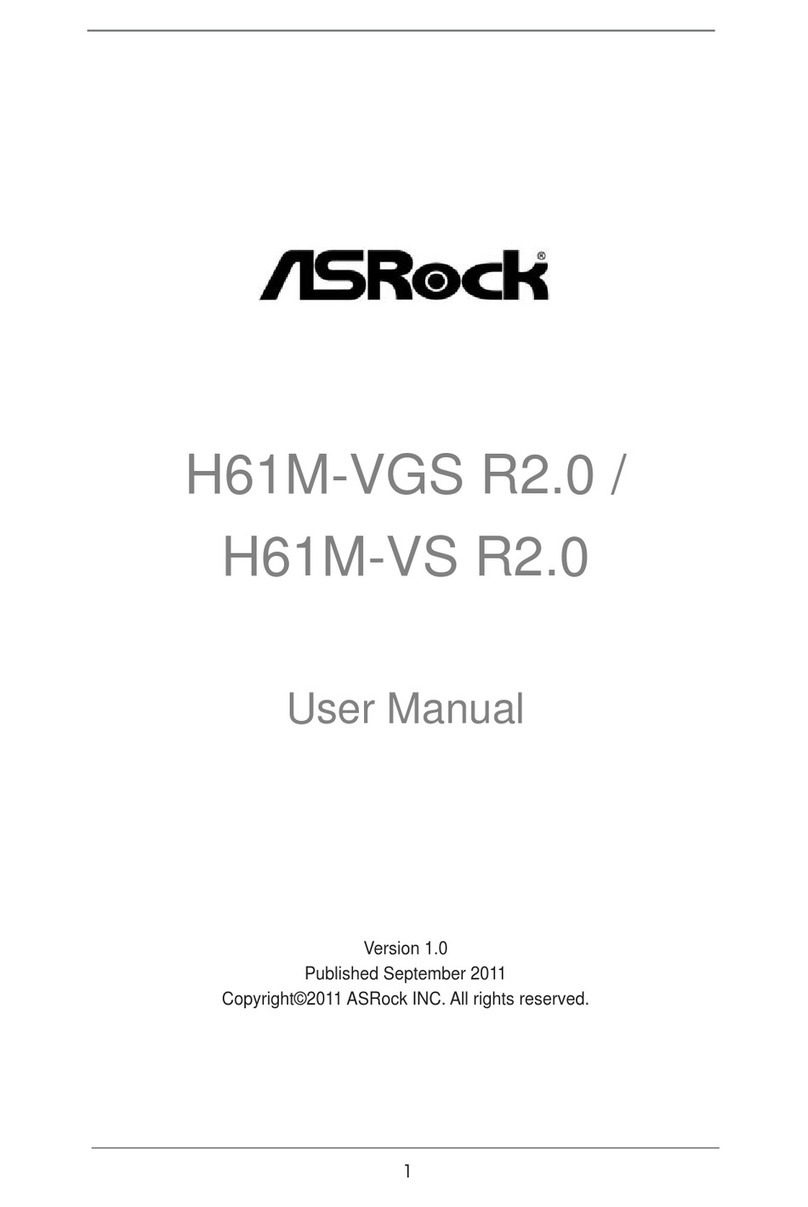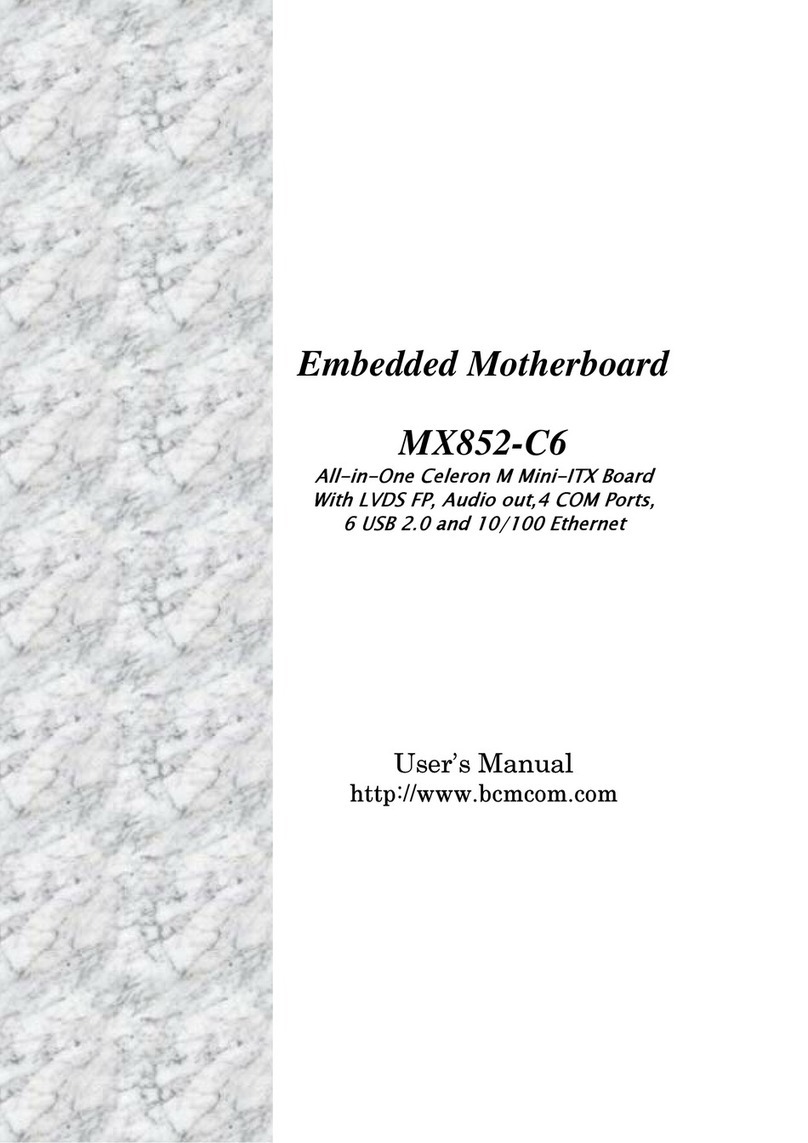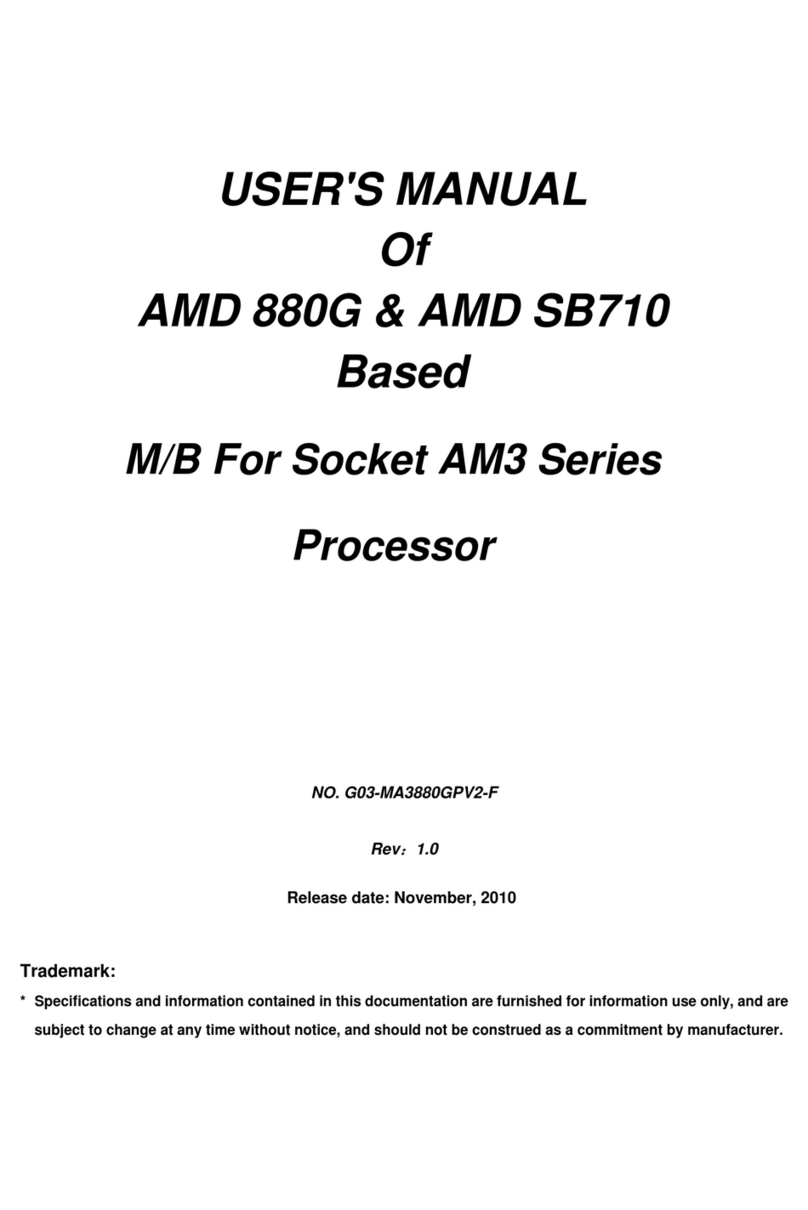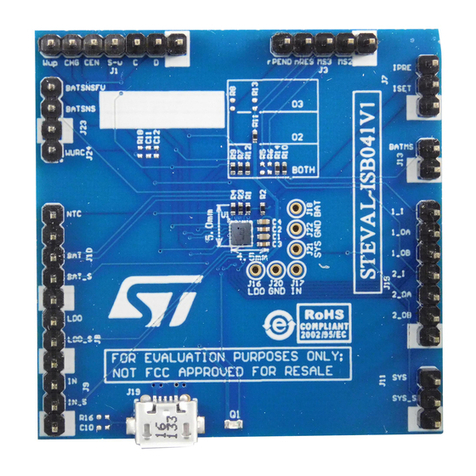Semiconductor Components Industries onsemi NCP1083 User manual

EVAL BOARD USER’S MANUAL
www.onsemi.com
©Semiconductor Components Industries, LLC, 2022
November, 2022 −Rev. 0
1Publication Order Number:
EVBUM2850/D
NCP1083 Evaluation Board
User's Manual
PoE−PD Interface & Flyback Controller
Board
NCP1083REF12VC4GEVB
General
The NCP1083REF12VC4GEVB board allows easy
implementation and evaluation of a Power−over−Ethernet
powered equipment that is able to operate with an assigned
power level up to 25.5 W. The evaluation board is based on
PoE Powered Device controller NCP1083 (U2) with
integrated PoE PD interface controller and Flyback DC/DC
controller. The Flyback converter on this NCP1083 based
reference design generates a 12 V output voltage that is
isolated from the Ethernet link conductors.
Figure 1. Operational NCP1083REF12VC4GEVB
showing Basic Interconnections
The NCP1083REF12VC4GEVB board is designed as a
PoE splitter: having a PoE−enabled Ethernet port (labeled
“PoE IN”) as input and generating an isolated 12 V supply
while passing through the data to another Ethernet port
(labeled “ETH OUT”).
Quick Start Guide
Step 1: Make sure the jumper is mounted on header P3
(labeled “MPS”).
Step 2: Insert the Ethernet cable (cf. blue cable in the picture
on the left) coming from the PSE in the Ethernet connector
J2 labeled “PoE IN”.
Step 3: Observe the status LEDs.
If the PSE powers up the system, the green POWER−ON
LED (labeled “PWRON”) should be ON.
The status of the yellow LED (labeled “NCL”) depends on
the PSE being used.
Step 4: Optionally connect the turret terminals that are
labeled “GND” and “12V” to a DC electronic load (cf. black
and red clips in the picture on the left). The DC electronic
load behind the NCP1083 EVB should be operational over
a 11 V to 13 V voltage range.

NCP1083REF12VC4GEVB
www.onsemi.com
2
Assigned Power
The NCP1083REF12VC4GEVB will request Class 4
during Physical Layer classification. PDs need to consider
that they can be underpowered and eventually be assigned
to Class 3.
The state of the nCLASS_AT output provides information
about the power level that the PSE has assigned to the
NCP1083REF12VC4GEVB during classification. See
Table 1 to determine the assigned power based on the status
of the orange NCL led.
Table 1. CLASSIFICATION RESULT
NCL Led Assigned Class Assigned Power
off 3 13 W
on 4 25.5 W
Figure 2 shows that the load on the 12 V output should be
limited to 1.82 A to meet the maximum input average power
for Class 4 over the complete input DC voltage range.
Likewise, Figure 3 shows that the load on the 12 V output
should be limited to 0.92 A to meet the maximum input
average power for Class 3 over the complete input DC
voltage range.
The application should always operate at or below the
assigned power limit. Failure to do so will result in the PSE
disconnecting the PD !
Maintain Power Signature (MPS)
A PD should draw a minimum amount of current in order
to prevent the PSE from removing power. The load resistor
R15 was added on the bottom side of the board to be able to
make sure the load current is always sufficient and the
NCP1083REF12VC4GEVB remains powered. This load
resistor R15 is enabled when a jumper is placed on header
P3 labeled “MPS”. As can be seen in Figure 4, the input
current remains well above 10 mA over the complete PSE
output voltage range when the jumper is mounted on the
“MPS” header P3.
Depending on the minimum current the system may draw,
the resistance value of R15 should be increased for the final
design in order not to waste power unnecessarily.
For some systems, the load resistor can even be omitted.
Earth Connection
A Powered Device (PD) can operate without an earth
connection.
In case NCP1083REF12VGEVB would need to be
earthed, it should be the frame ground “Frame” that is
connected to earth. This could be implemented in one of the
following ways:
•Soldering an earthed wire in the 1.6 mm hole
(labeled “E”)
•Connecting an earthed wire with alligator clip on the
SMT Test Point on the top (TP12) or the SMT Test
Point on the bottom (TP17)
•Connecting a shielded Ethernet cable of which the
shield is earthed to the PoE−enabled Ethernet port J2
(labeled “PoE IN”)
If NCP1083REF12VGEVB is earthed, the internal
system ground “GND” should not be driven more than 15 V
above or below earth potential in order not to overstress TVS
diode D21.
Auxiliary Supply
The NCP1083REF12VC4GEVB supports drawing
power from an alternate or local power source in
applications connected to non−PoE enabled networks. A
rear auxiliary supply can be inserted in connector J3.
The recommended voltage of the auxiliary supply is 48 V,
but eventually the NCP1083REF12VC4GEVB is able to
operate with a higher auxiliary supply voltage up to 57 V.
Requested Power
As mentioned before, the NCP1083REF12VC4GEVB
will request Class 4 during Physical Layer classification. If
a lower Class or power level is preferred, resistor R26
labeled “CLASS” should be changed. See the NCP1083
datasheet for the nominal resistance values.

NCP1083REF12VC4GEVB
www.onsemi.com
9
Figure 14. Conducted Emission – Preview Result and Final Result
Table 2. CONDUCTED EMISSION −FINAL RESULT QPK
Frequency (MHz) QuasiPeak (dBmV) Limit (dBmV) Margin (dB) Corr. (dB)
7.503000 58.48 74.00 15.52 9.6
8.038500 59.38 74.00 14.62 9.7
8.841750 59.61 74.00 14.39 9.7
9.379500 60.63 74.00 13.37 9.7
9.915000 58.32 74.00 15.68 9.7
10.047750 58.47 74.00 15.53 9.7
Table 3. CONDUCTED EMISSION −FINAL RESULT CAV
Frequency (MHz) CAverage (dBmV) Limit (dBmV) Margin (dB) Corr. (dB)
7.503000 58.25 64.00 5.76 9.6
8.038500 59.12 64.00 4.88 9.7
8.844000 59.30 64.00 4.70 9.7
9.379500 60.29 64.00 3.71 9.7
9.915000 57.94 64.00 6.06 9.7
10.047750 58.08 64.00 5.92 9.7

NCP1083REF12VC4GEVB
www.onsemi.com
10
Figure 15. Radiated Emission – Preview Result and Final Result
Table 4. RADIATED EMISSION −FINAL RESULT QPK
Frequency
(MHz)
QuasiPeak
(dBmV/m)
Limit
(dBmV/m)
Margin
(dB)
Meas. Time
(ms)
Bandwidth
(kHz)
Height
(cm)
Pol Azimuth
(deg)
Corr.
(dB/m)
31.160000 28.15 40.00 11.85 1000.0 120.000 98.0 V 173.0 −9.9
31.180000 26.45 40.00 13.55 1000.0 120.000 122.0 V 253.0 −9.9
34.360000 27.29 40.00 12.71 1000.0 120.000 103.0 V 138.0 −11.8
34.900000 29.86 40.00 10.14 1000.0 120.000 98.0 V 309.0 −12.1

www.onsemi.com
1
onsemi, , and other names, marks, and brands are registered and/or common law trademarks of Semiconductor Components Industries, LLC dba “onsemi” or its affiliates
and/or subsidiaries in the United States and/or other countries. onsemi owns the rights to a number of patents, trademarks, copyrights, trade secrets, and other intellectual property. A
listing of onsemi’s product/patent coverage may be accessed at www.onsemi.com/site/pdf/Patent−Marking.pdf. onsemi is an Equal Opportunity/Affirmative Action Employer. This
literature is subject to all applicable copyright laws and is not for resale in any manner.
The evaluation board/kit (research and development board/kit) (hereinafter the “board”) is not a finished product and is not available for sale to consumers. The board is only intended
for research, development, demonstration and evaluation purposes and will only be used in laboratory/development areas by persons with an engineering/technical training and familiar
with the risks associated with handling electrical/mechanical components, systems and subsystems. This person assumes full responsibility/liability for proper and safe handling. Any
other use, resale or redistribution for any other purpose is strictly prohibited.
THE BOARD IS PROVIDED BY ONSEMI TO YOU “AS IS” AND WITHOUT ANY REPRESENTATIONS OR WARRANTIES WHATSOEVER. WITHOUT LIMITING THE FOREGOING,
ONSEMI (AND ITS LICENSORS/SUPPLIERS) HEREBY DISCLAIMS ANY AND ALL REPRESENTATIONS AND WARRANTIES IN RELATION TO THE BOARD, ANY
MODIFICATIONS, OR THIS AGREEMENT, WHETHER EXPRESS, IMPLIED, STATUTORY OR OTHERWISE, INCLUDING WITHOUT LIMITATION ANY AND ALL
REPRESENTATIONS AND WARRANTIES OF MERCHANTABILITY, FITNESS FOR A PARTICULAR PURPOSE, TITLE, NON−INFRINGEMENT, AND THOSE ARISING FROM A
COURSE OF DEALING, TRADE USAGE, TRADE CUSTOM OR TRADE PRACTICE.
onsemi reserves the right to make changes without further notice to any board.
You are responsible for determining whether the board will be suitable for your intended use or application or will achieve your intended results. Prior to using or distributing any systems
that have been evaluated, designed or tested using the board, you agree to test and validate your design to confirm the functionality for your application. Any technical, applications or
design information or advice, quality characterization, reliability data or other services provided by onsemi shall not constitute any representation or warranty by onsemi, and no additional
obligations or liabilities shall arise from onsemi having provided such information or services.
onsemi products including the boards are not designed, intended, or authorized for use in life support systems, or any FDA Class 3 medical devices or medical devices with a similar
or equivalent classification in a foreign jurisdiction, or any devices intended for implantation in the human body. You agree to indemnify, defend and hold harmless onsemi, its directors,
officers, employees, representatives, agents, subsidiaries, affiliates, distributors, and assigns, against any and all liabilities, losses, costs, damages, judgments, and expenses, arising
out of any claim, demand, investigation, lawsuit, regulatory action or cause of action arising out of or associated with any unauthorized use, even if such claim alleges that onsemi was
negligent regarding the design or manufacture of any products and/or the board.
This evaluation board/kit does not fall within the scope of the European Union directives regarding electromagnetic compatibility, restricted substances (RoHS), recycling (WEEE), FCC,
CE or UL, and may not meet the technical requirements of these or other related directives.
FCC WARNING – This evaluation board/kit is intended for use for engineering development, demonstration, or evaluation purposes only and is not considered by onsemi to be a finished
end product fit for general consumer use. It may generate, use, or radiate radio frequency energy and has not been tested for compliance with the limits of computing devices pursuant
to part 15 of FCC rules, which are designed to provide reasonable protection against radio frequency interference. Operation of this equipment may cause interference with radio
communications, in which case the user shall be responsible, at its expense, to take whatever measures may be required to correct this interference.
onsemi does not convey any license under its patent rights nor the rights of others.
LIMITATIONS OF LIABILITY: onsemi shall not be liable for any special, consequential, incidental, indirect or punitive damages, including, but not limited to the costs of requalification,
delay, loss of profits or goodwill, arising out of or in connection with the board, even if onsemi is advised of the possibility of such damages. In no event shall onsemi’s aggregate liability
from any obligation arising out of or in connection with the board, under any theory of liability, exceed the purchase price paid for the board, if any.
The board is provided to you subject to the license and other terms per onsemi’s standard terms and conditions of sale. For more information and documentation, please visit
www.onsemi.com.
PUBLICATION ORDERING INFORMATION
TECHNICAL SUPPORT
North American Technical Support:
Voice Mail: 1 800−282−9855 Toll Free USA/Canada
Phone: 011 421 33 790 2910
LITERATURE FULFILLMENT:
onsemi Website: www.onsemi.com
Europe, Middle East and Africa Technical Support:
Phone: 00421 33 790 2910
For additional information, please contact your local Sales Representative
◊
This manual suits for next models
1
Table of contents
Other Semiconductor Components Industries Motherboard manuals







